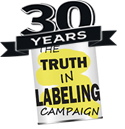DATA

The The Young are Particularly at Risk for Brain Damage from Ingestion of free glutamate
In the 1960s and 1970s, it was repeatedly demonstrated that free glutamate causes brain damage, subsequent endocrine disorders, and adverse reactions when fed to the unborn and the newborn.While people of all ages are vulnerable, the young are particularly at risk for brain damage from ingestion of free glutamate. Studies have demonstrated that it can cross the placenta during pregnancy (8,9,10), can cross the blood brain barrier (BBB) in an unregulated manner during development, and can pass through the five circumventricular organs (unique areas of the brain that lie outside the BBB) which are leaky at best at any stage of life (11,12,13). Moreover, the BBB is easily damaged by fever, stroke, trauma to the head, seizures, ingestion of free glutamate and the normal process of aging (14,15).
One of the neuroendocrine disorders following free glutamate-induced brain lesions is gross obesity that may manifest as the young approach maturity (16).
The greatest concentration of free glutamate fed to children will be found in infant formula. Free glutamate, as well as other excitotoxic amino acids are found in infant formula, with the greatest amounts found in hypoallergenic formula. All of the excitotoxic amino acids will be found in the diets of pregnant females and nursing mothers who do not purposely avoid them. In addition, vaccines, including vaccines administered to children, may contain free glutamate (17). Vaccines are injected, not ingested. They bypass the digestive system, sending their excitotoxic glutamate directly to the blood, brain, and/or vulnerable organs.
In evaluating the relevance of these studies to ingestion of free glutamate in food, drugs, and dietary supplements, it is essential to understand that the glutamate given to both animal and human subjects in these studies is a manufactured free amino acid produced in food and/or chemical manufacturing plants. It is also essential to understand that when glutamic acid is manufactured, it is always accompanied by D-glutamate, pyroglutamate, and other impurities (18,19,20,21,22,23,24).
It is glutamate as monosodium glutamate that has been administered or fed to subjects in studies where some form of glutamate produces brain lesions and/or adverse reactions. Glutamate found in intact protein has never been shown to cause brain lesions or adverse reactions.
REFERENCES
8. Frieder B, Grimm VE. Prenatal monosodium glutamate (MSG) treatment given through the mother's diet causes behavioral deficits in rat offspring. Intern J Neurosci. 1984;23(2):117-126.9. Gao J, Wu J, Zhao XN, Zhang WN, Zhang YY, Zhang ZX. [Transplacental neurotoxic effects of monosodium glutamate on structures and functions of specific brain areas of filial mice.] Sheng Li Hsueh Pao Acta Physiologica Sinica. 1994;46(1):44-51.
10. Yu T, Zhao Y, Shi W, Ma R, Yu L. Effects of maternal oral administration of monosodium glutamate at a late stage of pregnancy on developing mouse fetal brain. Brain Res. 1997;747(2):195-206.
11. Skultetyova I, Tokarev D, Jezova D. Stress-induced increase in blood-brain barrier permeability in control and monosodium glutamate-treated rats. Brain Res Bull. 1998;45(2):175-178.
12. Price MT, Olney JW, Lowry OH, Buchsbaum S. Uptake of exogenous glutamate and aspartate by circumventricular organs but not other regions of brain. J Neurochem. 1981;36(5):1774-1780.
13. Broadwell RD, Sofroniew MV. Serum proteins bypass the blood-brain fluid barriers for extracellular entry to the central nervous system. Exp Neurol. 1993;120(2):245-263.
14. Blaylock RL. Excitotoxins: The Taste That Kills. Santa Fe, New Mexico: Health Press; 1994.
15. Nemeroff CB, Crisley FD. Monosodium L-glutamate induced convulsions: temporary alteration in blood-brain barrier permeability to plasma proteins. Environ Physiol Biochem. 1975;5(6):389-395.
16. Olney JW. Brain lesions, obesity, and other disturbances in mice treated with monosodium glutamate. Science. 1969;164(880):719-721.
17. Centers for Disease Control and Prevention. Vaccines & immunizations. http://www.cdc.gov/vaccines/vac-gen/additives.htm. Accessed February 4, 2009.
18, Junker B. Fermentation. (6.0, Microbiological and Fermentation Aspects) Kirt-Othmer encyclopedia of chemical technology.
19. Deki M, Echizen A, Temma T. Minor components in monosodium glutamate. Kanzei Chuo Bunsekishoho. 1977;17:59-62.
20. Man EH, Bada JL. Dietary D-Amino Acids. Ann Rev Nutr. 1987;7:209-25.
21. Rundlett KL, Armstrong DW. Evaluation of free D-glutamate in processed foods. Chirality. 1994;6:277-82.
22. Konno R, Oowada T, Ozaki A, et al. Origin of D-alanine present in urine of mutant mice lacking D-amino-acid oxidase activity. Am J Physiol. 1993;265:G699-703.
23. Federation of American Societies for Experimental Biology (FASEB). Analysis of adverse reactions to monosodium glutamate (MSG). Raiten DJ, Talbot, JM, Fisher, KD, eds. Bethesda, MD: Life Sciences Research Office, FASEB; 1995:9-13,31.
24. CRC Handbook of Food Additives. Second Edition. Vol 1. Furia TE, ed. Cleveland: CRC Press; 1972:516.

